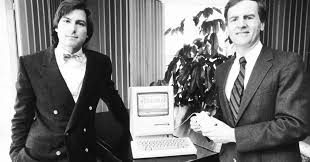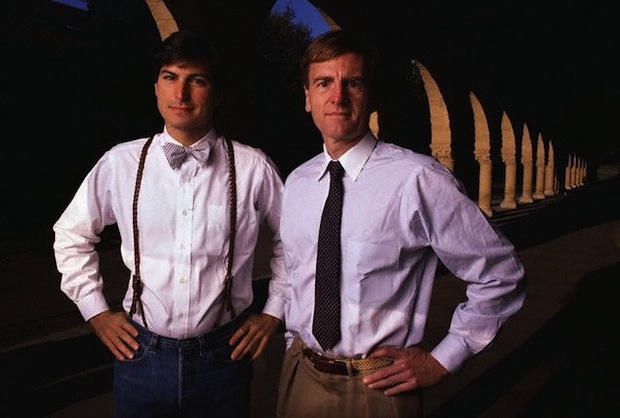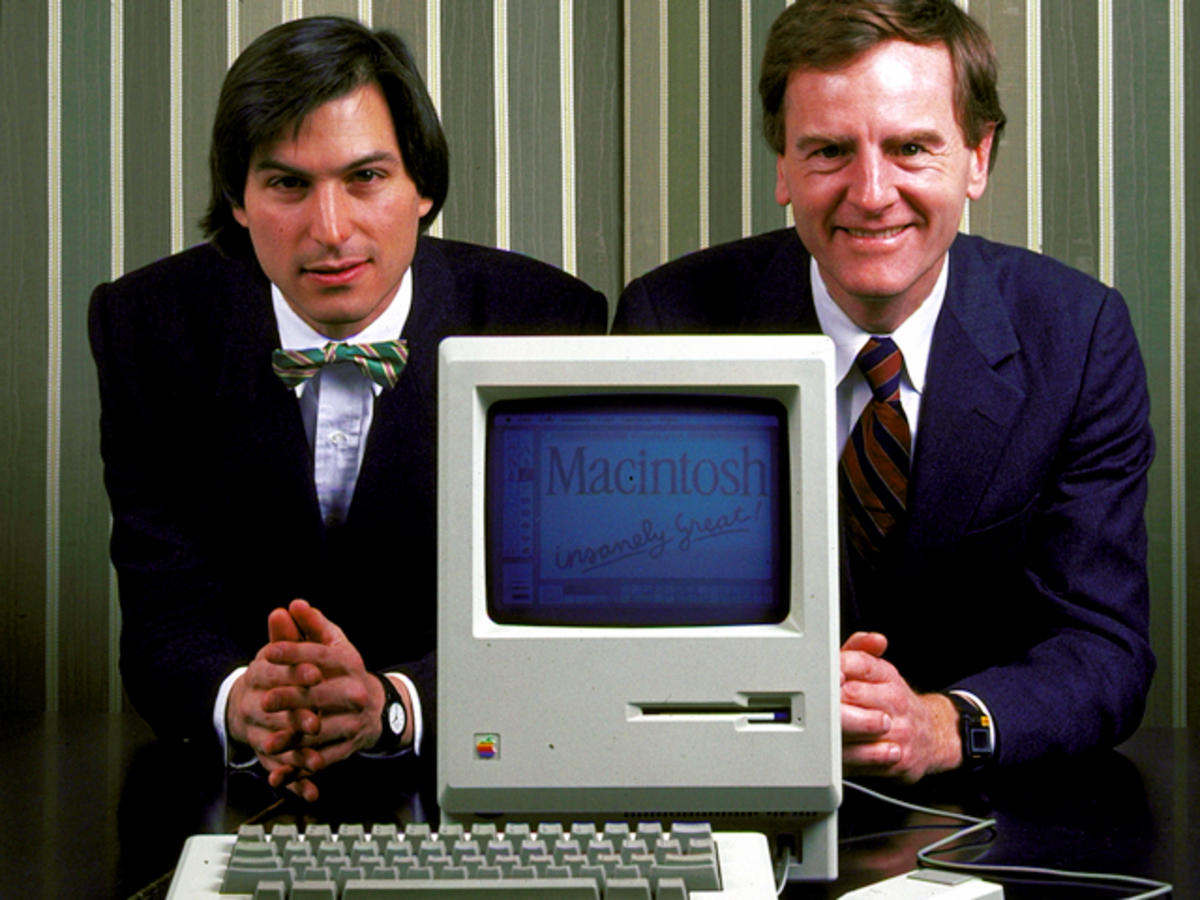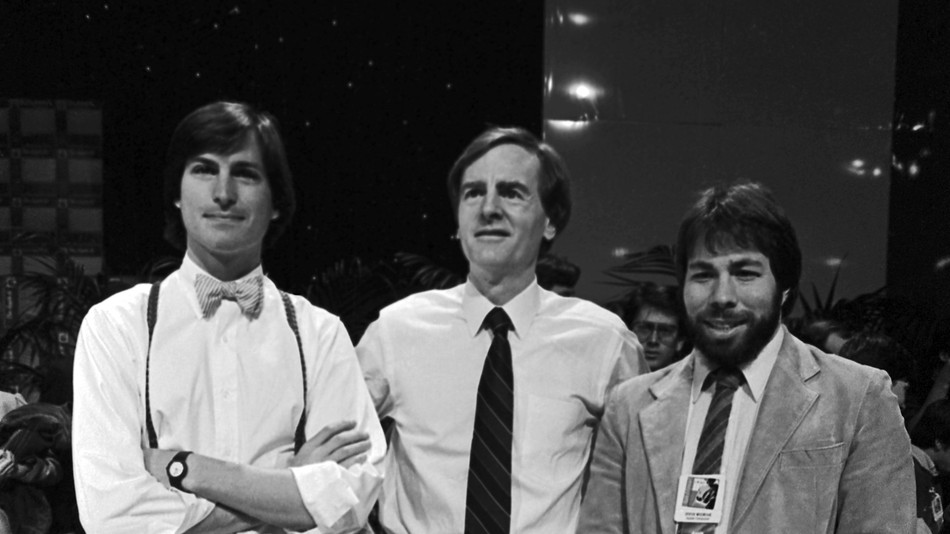The 8s were wild for Apple in many ways. On April 1983, XNUMX, John Sculley, the former president of PepsiCo, who was brought to Apple by Steve Jobs himself, took over the management of the apple company. Let's recall how his accession to the head of the Californian giant took place.
An offer that cannot be refused
Despite the complete absence of any experience in the field of selling technology products, John Sculley accepted Steve Jobs' call to Apple. Jobs' suggestive question about whether Sculley would rather sell "sweetened water" for the rest of his life, or whether he'd rather get a chance to change the world, has gone down in history. Jobs could be very persuasive when he wanted to, and he succeeded with Sculley.
At the time when John Sculley enriched the ranks of the employees of the Cupertino company, Mark Markkula had been at the head of the company since 1981. The company's management agreed to an annual salary of one million dollars for Sculley, who received half a million dollars a year at Pepsi. This amount included both the classic salary and the bonus. But that was not all - Sculley received from Apple an entry bonus of one million dollars, an insurance policy in the form of the promise of a million "golden parachute", hundreds of thousands of dollars in shares and an allowance to buy a new house in California.
When things don't go as planned
John Sculley was forty-four years old when he took over the apple helm from Mark Markkula. He officially started working at Apple in May, and was appointed CEO a month later. Originally, the plan was for Sculley to run the company with Steve Jobs, who was chairman at the time. Jobs was to be in charge of the software area, Sculley's task was to use his previous marketing experience at Pepsi to continue the successful growth of the apple company. Apple's board of directors firmly hoped that Sculley would help make the Cupertino company a worthy competitor to IBM.
During his time at Pepsi, John Sculley engaged in bold competitive battles with CocaCola. He has managed to produce many successful campaigns and marketing strategies - for example The Pepsi Challenge and the Pepsi Generation campaign.
The personalities of Jobs and Sculley became a stumbling block. The two simply had a problem working together. After countless internal disputes, John Sculley finally asked Apple's board of directors to remove Steve Jobs from his operational powers at the company. Jobs left the Cupertino company in 1985, and it cannot be said that he could not help himself. He founded NeXT and after some time acquired a majority stake in Pixar. We won't change history, but it's interesting to ask ourselves where Apple would be - then and now - if Steve Jobs had become its CEO again in 1983.
How was the layoff?
For many years, Jobs' departure from Apple was considered to be the result of being fired, but John Sculley himself later began to disprove this theory. He gave several interviews in which he claimed that Steve was never fired from the apple company. “Jobs and I spent a number of months getting to know each other—it was almost five months. I came to California, he came to New York… one of the key things we learned was that we don't sell a product, we sell an experience.” quotes former Apple server director AppleInsider. According to Sculley, both were well aware of their roles, but their relationship only began to falter in 1985 after the failure of Macintosh Office. Its sales were really low, and Sculley and Jobs began to have significant disagreements. "Steve wanted to lower the price of the Macintosh," recalls Sculley. "At the same time, he wanted to continue the massive advertising campaign while reducing the emphasis on Apple."
Sculley disagreed with Jobs' position: "There was a strong disagreement between us. I told him that if he was going to try to change things himself, I would have no choice but to go to the board and sort it out there. He didn't believe I would do it. And I did.” Mike Markkul then had the difficult task of interviewing key Apple figures to decide whether Sculley or Jobs was right. After ten days, the decision was made in Sculley's favor, and Steve Jobs was asked to step down as head of the Macintosh division. "So Steve wasn't actually fired from Apple, he was just relieved of his role as head of the Macintosh division (…), later left the company, took some of the key executives with him, and founded NeXT Computing.".
But Jobs also spoke about the events of that time in his famous speech on the grounds of Stanford University in June 2005: “We had just released our best creation—the Macintosh—and I celebrated my thirties. And then I got fired. How can they fire you from the company you started? As Apple grew, we hired someone who I thought had great talent to run the company alongside me, and things went really well for the first year. But our visions of the future were different. The board eventually sided with him. So I found myself out of the business in my thirties, in a very public way.” recalled Jobs, who later added that "getting fired from Apple was the best thing that could have ever happened to him".



